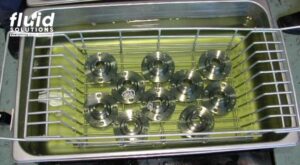Salt Meters
Salt meters, also known as salinity meters, are essential tools for measuring the salt concentration in various liquids. Industries such as food processing, agriculture, and environmental monitoring rely on salt meters to ensure precise control of salt levels. These instruments play a crucial role in maintaining the desired salt content in solutions, contributing to product quality, environmental compliance, and overall process efficiency.
There are different types of salt meters designed to accommodate diverse applications. Handheld refractometers, conductivity meters, and titration-based meters are among the common types. Handheld refractometers use the refractive index of a solution to determine salt concentration, while conductivity meters measure the electrical conductivity of a liquid, correlating it with salt content. Titration-based meters involve a chemical process to pinpoint the salt concentration accurately. Each type offers unique advantages, meeting specific industry needs and providing flexibility in measuring salt levels.


ATAGO PAL-SALT
Digital hand-held salt meter widely used in various industries for food and industrial solutions

ATAGO ES-421
Desktop type digital salt meter that requires only 0.1 mL of sample

ATAGO PAL-Fish Tank
Digital hand-held salt meter for measuring salinity of seawater
Product Range Summary
| Product Name | Type | Range | Product Data Sheet |
|---|---|---|---|
| ATAGO PAL-SALT | Digital hand-held salt meter | 0.00 to 10.0% | PDS |
| ATAGO PAL-SALT Mohr | Digital hand-held salt meter (Mohr method titration) | 0.00 to 10.0% | PDS |
| ATAGO ES-421 | Desktop type digital salt meter | 0.00 to 10.0% | PDS |
| ATAGO PAL-FM1 | Probe type digital salt meter for dried fish | 0.0 to 10.0% | PDS |
| ATAGO PAL-SALTPROBE | Probe type digital salt meter | 0.0 to 7.0% | PDS |
| ATAGO PAL-Fish Tank | Digital hand-held salt meter for seawater | 0.0 to 45.0% | PDS |
Can't find what you're
looking for?
Frequently Asked Questions
What is the Principle of a Salt Meter?
The principle of a salt meter involves utilizing conductivity or refractive index to measure the concentration of dissolved salts in a liquid. This measurement is then translated into salinity, providing valuable information about the salt content in a solution.
How Do You Read a Salt Meter?
Reading a salt meter typically involves observing the display or scale on the instrument, which indicates the salinity level. The specific method can vary depending on the type of salt meter, whether it uses conductivity or refractive index as its measuring principle.
What is a Salt Measurement Instrument?
A salt measurement instrument, commonly known as a salt meter or salinity meter, is a specialized device designed to quantify the concentration of salts in a liquid. This instrument is particularly valuable in applications where precise salinity levels need to be monitored and controlled.
What Does a Measure of Salt Mean?
A measure of salt, as indicated by a salt meter, represents the concentration of dissolved salts in a solution, often expressed as a percentage or parts per million (ppm). This information is crucial in various industries, including aquaculture, marine science, and food processing, where maintaining specific salinity levels is essential.
How to Use a Salt Meter?
Using a salt meter typically involves calibrating the instrument with a standard solution and then immersing the probe into the liquid of interest. The meter will provide a reading, indicating the salinity level based on the chosen measurement principle.
What Are Salt Meters Used For?
Salt meters find diverse applications, especially in water-related industries. They are commonly used in aquaculture to monitor and maintain optimal salinity levels for aquatic organisms. Additionally, salt meters are employed in marine science, environmental monitoring, and food processing to ensure precise control over salinity in various solutions.
Learn More
Get more information about Salt Meters, Industrial Lubricants, and related topics from these articles.



